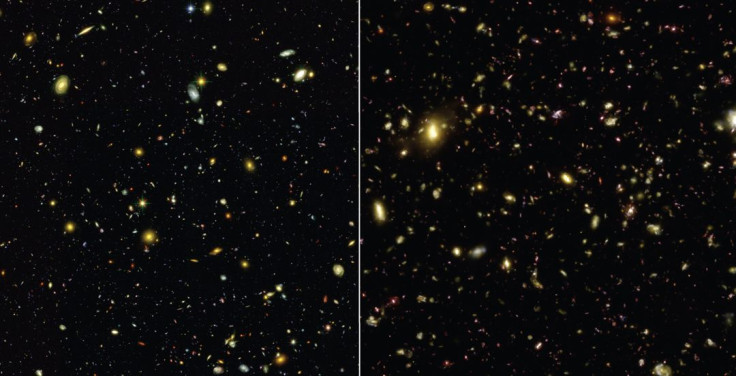Virtual Universe Developed By Computer Simulation Recreates Cosmic Evolution

Astronomers have created a realistic virtual universe, showing a time-lapse computer simulation of how the cosmos may have looked like over billions of years of its evolution.
According to astronomers, the computer simulation called “Illustris” can recreate 13 billion years of cosmic evolution in a cube that is about 350 million light years on each side. Illustris employs a sophisticated computer program to create the virtual universe, which includes both normal matter and dark matter using 12 billion 3D “pixels,” or resolution elements.
“Until now, no single simulation was able to reproduce the universe on both large and small scales simultaneously,” Mark Vogelsberger, a researcher at Massachusetts Institute of Technology and the lead author of a study, said in a statement. Vogelsberger conducted the research in collaboration with researchers at several institutions, including the Heidelberg Institute for Theoretical Studies in Germany.
A video of the simulation has also been created, showing a time-lapse view of the universe developing into its current form in brilliant colors.
As part of the study, published Thursday in the journal Nature, astronomers took five years to develop the Illustris program. According to them, the actual calculations took three months of “run time,” using a total of 8,000 CPUs running in parallel -- a feat, which would have taken more than 2,000 years to complete if the astronomers had used an average desktop computer.
When the computer simulation of cosmic evolution, began a mere 12 million years after the Big Bang, reached the present day, astronomers counted more than 41,000 galaxies in the cube of simulated space. Illustris also showed a realistic mix of spiral galaxies like the Milky Way and football-shaped elliptical galaxies. In addition, the simulation also recreated galaxy clusters and the bubbles and voids of the cosmic web.
According to astronomers, telescopes like NASA’s Hubble can provide views of the early universe by looking at greater distances, but they cannot be used to follow the evolution of a single galaxy over time.
“Illustris is like a time machine. We can go forward and backward in time. We can pause the simulation and zoom into a single galaxy or galaxy cluster to see what's really going on," Shy Genel of the Harvard–Smithsonian Center for Astrophysics said in the statement.
© Copyright IBTimes 2025. All rights reserved.






















